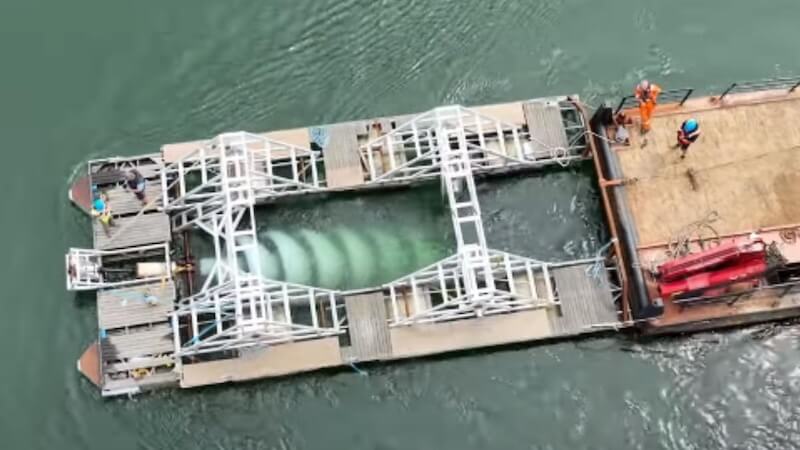
The London start-up Spiralis Energy wants to generate energy in the English Channel with a specially developed tidal power plant. It is based on the principle of the Archimedean screw.
In addition to solar energy and wind power, wave energy is also becoming an increasingly promising energy source. More and more companies around the world are using hydropower to generate electricity. One example is the London start-up Spiralis Energy, which wants to test a screw-like tidal power plant in the English Channel at the end of 2024.
Unlike wind and solar energy, which are easier to predict and use, the use of tidal energy requires sophisticated systems to convert even the smallest wave movements into energy. What is special about the Spiralis Energy generator is that it effectively generates electricity and at the same time is made from recycled plastic waste.
Tidal power plant in the English Channel comes from the 3D printer
The tidal power plant is based on a large Archimedean screw that has been modified with foils. This should help to increase the torque and achieve a higher energy yield. Although the screw is underwater, the energy is generated above the water. This in turn should make the system easier to maintain.
The modular design enables easy 3D printing and repair even in remote locations. Spiralis Energy has already concluded an agreement with the Channel Island of Alderney for the future test phase. The plan is to use two axial skelters. These are each around 20 meters long and are located on floating platforms.
Pilot project initially examines tidal currents
However, the project participants do not plan to generate any energy during the tests. First, the team wants to analyse the tidal currents in the cold months. If the test is successful, Spiralis Energy could set up an office in Alderney and feed energy into the local grid at a reduced price.
According to the company's website, the Axial Skelter can deliver the lowest energy costs compared to other energy generation options worldwide. A first test of the prototype took place in May 2024 and was successful. The full-fledged generator has an output of 500 kilowatts at a flow velocity of 3.5 meters per second.
Also interesting:
Source: https://www.basicthinking.de/blog/2024/06/18/wellenkraftwerk-aermelkanal/


